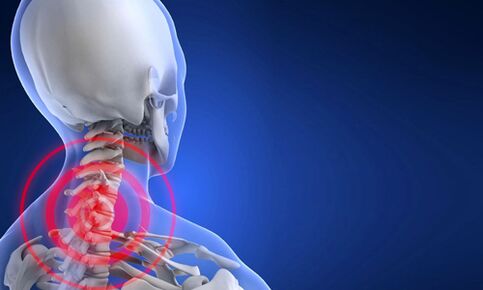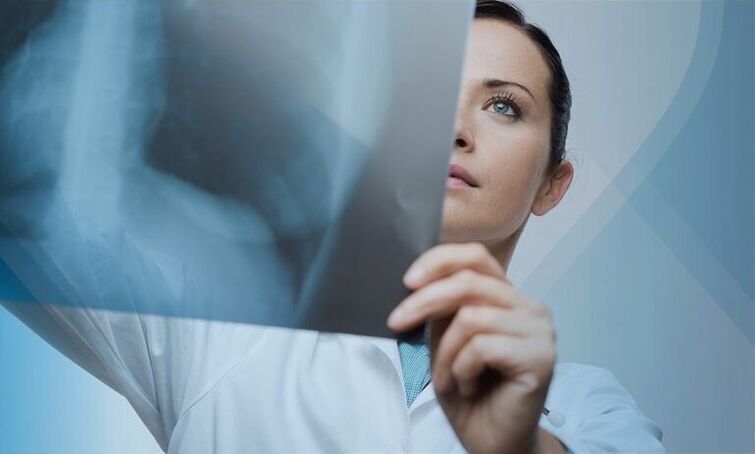Currently, not only are people of retirement age susceptible to this disease, young people over the age of 25 are also at risk. Osteochondrosis affects different areas and departments: lower back, neck, chest.

Causes and stages of cervical osteochondrosis
Osteochondrosis occurs due to the influence of such factors:
- excessive physical exertion of the spine;
- stooping, spinal disc injuries;
- nervous tension, stressful situations;
- insufficient intake of the necessary vitamins, minerals and trace elements, which slows down the metabolic process and leads to the formation of osteochondrosis;
- sedentary way of life;
- the presence of flat feet;
- sleeping on a soft pillow or mattress;
- frequent awkward postures while sitting;
- carrying the bag on one side;
- circulatory disorders and muscle spasms.

All causes in combination or separately create favorable conditions for the development of osteochondrosis. Women are more susceptible to this disease, and wearing high heels and a bag on one shoulder worsens the situation, pregnancy is no exception. Failure to follow the rules recommended by the attending physician exposes the mother's health to serious disorders.
In the process of stress on the cervical region, cracks are formed on the cartilage, disc displacements and pinching of the nerves and spinal cord are possible. Along the cervical region there are vessels that supply the necessary substances to the brain, their compression leads to serious health problems. If you do not treat osteochondrosis of the cervical spine at home, the person's condition worsens, the distance between the vertebrae narrows, then the bone tissue grows, causing severe pain and discomfort. There are several stages of cervical osteochondrosis:
- The first stage is characterized by the appearance of cracks in the fibrous ring, possibly displacement of the nucleus to the side. Symptoms will be shooting and sharp pain, sudden muscle spasms, the patient may have dilated pupils and numbness of the tongue - this is an indicator of the initial stage of nerve damage. Specialists often further diagnose Wright and Nafziger syndromes, the characteristic features of which are numbness of the hand when lifting, numbness, pinching of nerve endings in the clavicle. Neck pain that does not go away on its own and often occurs during exercise, characteristic crunch in the affected areas, unexplained fatigue, tinnitus.
- During the second stage, the gap between the vertebrae narrows even more, this leads to drying of the fibrous ring, the rupture of the capsule is also accompanied by an inflammatory process. Without proper treatment, osteophytes - growths of bone tissue - appear.
- The third stage is characterized by complete rupture of cartilage tissue, prolapse of the nucleus may occur, which provokes the formation of a herniated disc. Symptoms that help to recognize the disease in stage 3 are often sharp pain in the cervical region, frequent tingling of the limbs, a person can not control his arm or leg, it is accompanied by dizziness and headache, loss of consciousness.
Diagnosis and treatment of the disease

If you suspect cervical osteochondrosis, you cannot treat yourself. The symptoms of some diseases are very similar to each other, and self-medication can lead to worsening of the condition and wheelchair.
The disease is always easier to eliminate in the early stages of development, when it has not gained strength and there is little damage to internal organs.
The loss of valuable time threatens with long-term treatment, which consists of medication, physiotherapy and daily routine.
If symptoms of the disease are found, it is necessary to contact a specialist - a neurologist, he will be able to diagnose, determine the damage to the nerve endings and prescribe additional X-rays, vascular ultrasound and tomography. The diagnosis is based on MRI and radiography.
In the initial stages of the disease, the patient can treat cervical osteochondrosis at home by visiting a specialist at a certain time and fully adhering to his advice and prescriptions.
Medical treatment consists of taking certain medications that the doctor must prescribe depending on the stage of the disease and the general condition of the body, indicating the dosage:
- NSAIDs, the intake lasts up to 2 weeks;
- sedatives avoid complete exhaustion of the nervous system, among them tincture of motherwort, valerian;
- when swelling occurs, the doctor prescribes diuretics that reduce the swelling of the inflamed area;
- thanks to the intake of B vitamins, metabolic processes in the affected tissues of the nervous system are normalized, neuromuscular conduction is improved;
- muscle relaxants relax muscles that are prone to spasms;
- taking chondroprotective drugs to improve the functioning of the intervertebral discs and cartilage;
- in addition, the specialist prescribes the use of ointments and creams, they soothe pain, warm the tissue and help relieve the condition of the person.
If the patient feels unwell, bed rest is mandatory. Due to the correct position of the body, the spinal discs relax, the pain decreases. Bed rest lasts no more than 2 days, after which the patient must move.
Tips for relieving the human condition
Doctors often hear the question of how to treat cervical osteochondrosis at home. If the patient is in the acute stage of the disease, it is recommended to perform light breathing exercises and several exercises to relieve spasms.
With the improvement of well-being it is allowed to perform complexes of exercises in a sitting or standing position under the supervision of an experienced specialist. When a person has learned all the necessary rules and strictly follows them, he is allowed to perform therapeutic exercises at home.
It consists of several smooth turns and tilts of the head, after which the load gradually increases. If a sudden muscle spasm occurs, it is necessary to make a light massage that does not cause pain and discomfort.
In good health for preventive purposes, experts recommend visiting an experienced masseur twice a year. It is able not only to properly and quickly warm up the muscles, but also to qualitatively remove small salt deposits and develop joints and vertebrae.
After consulting a doctor, it is allowed to use the Glisson loop, which consists of several straps hung on a hook. They allow you to support your head and relieve neck tension. Diet plays a major role in the treatment of cervical osteochondrosis. Experts advise to exclude from daily consumption products that can increase muscle tone and lead to spasm - coffee, tea, alcoholic and soft drinks, smoked products and spices. A person with osteochondrosis will benefit from:

- foods high in fiber, phytochemicals and antioxidants, they will not only improve the general condition of the patient, but also have a positive effect on vertebrae and cartilage: these are fresh fruits and vegetables, legumes in any form, cereals;
- products containing proteins - milk and its derivatives, nuts of all kinds, eggs, dietary and lean meats and fish, beef;
- products with unsaturated fatty acids - fatty varieties of sea fish, flaxseed, lightly fried and dried;
- products with a high level of calcium in the composition - sour milk products, mineral water.
If a person is not in the acute stage, it is still better not to take risks and not to observe the affected tissues again due to eating the wrong food. You need to drink enough plain still water, balance your diet, perform daily exercises of therapeutic exercises that not only weaken and relieve tension from the affected areas of the body, but also have a strengthening effect on the patient's body.
During work you should rest at short intervals, perform a quick self-massage and observe the correct posture.
The danger of self-medication

In order not to put yourself at great risk, it is not necessary to self-medicate. Only an experienced specialist can understand the disease, understand the stage of osteochondrosis, take measures to eliminate the disease and prescribe the correct and qualified treatment. Some diseases are quite insidious and can easily be disguised as others.
The examination with the help of X-ray, ultrasound, magnetic resonance imaging will help to check the structure of the spinal discs, to detect problems and to find the right option for their removal and alleviation of the patient's condition. If a person treats himself, he can miss the initial stage of the disease and expose his body to even greater destruction. Uncontrolled intake of drugs will damage not only the gastrointestinal tract, but also the liver and kidneys, which will remove toxins and purify the blood in an enhanced mode.
After consulting a doctor at home, you can use decoctions of medicinal herbs and plants that will enhance the effect of ointments and preparations:
- Celery: 1 teaspoon of crushed root of this plant is poured into 1 liter of warm water and left to infuse for 8 hours, after straining take 1 teaspoon 3 times a day after meals. Celery seeds: 1 tbsp. l. pour 0, 5 liters of boiling water, insist 2 hours and take 1 tbsp. l. 3 times daily before meals.
- Fresh horseradish or cabbage leaves, pre-crushed, are applied to the affected areas, tied on top with a warm scarf or shawl and replaced if necessary.
Recommendations of specialists for the prevention of osteochondrosis
The most common mistake that many patients make is the constant belief that the disease will go away on its own.
Doctors say that such an attitude to health has a detrimental effect on a person's condition and worsens the course of cervical osteochondrosis.
The course of treatment consists not only in eliminating the pain, discomfort and some symptoms, but also in repairing the damaged spinal and cervical discs, removing the compression of the arteries leading to the brain, and maintaining the well-being of the person.
The recovery process is quite long and requires a lot of endurance, effort and help from relatives and friends, but the result will allow you to feel free, not addicted to drugs and enjoy life.

























